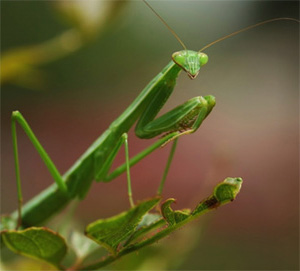Eeww! The bugs are taking over our gardens! Bugs can be gross and detrimental to the health of our gardens as they chow down on the plants we cultivate to make our yards look nicer or provide us with food. But before you reach for the bug spray, consider that bugs can be very beneficial to our gardens. Bugs are your friends if you are looking to garden organically or pesticide-free. They serve a number of different functions in our garden, including pollinating, cultivating, and ridding them of harmful insects.
The Pollinators
Without the pollinators, our garden plants would not be able to reproduce by way of seeds. Bees, butterflies, and hoverflies are the better known pollinators. Many of the predatory bugs listed later in this article also serve as pollinators.
The Cultivators
Earthworms are the best known cultivators of our soil, breaking down organic matter and aerating the soil. In addition to earthworms, slugs and slaters also work to help break down organics. While they might be great cultivators, slugs and slaters can also turn into garden pests, attacking green leaves and fruits.
The Predators
Just as there are a variety of bugs that find our gardens a veritable smorgasbord, there are many bugs that find these pesky bugs a delectable treat and don't have a negative impact on your garden. While many types of beetles are considered pests, ladybugs, a beetle species, are considered one of the best predators your garden can have.
In both adult and larval form, ladybugs have a voracious appetite for many garden pests. Lacewings, damsel bugs, aphid midges and other similar bugs are great to have in your garden. The nocturnal ground beetle is another beneficial beetle that preys on slugs, snails, cutworks, and cabbage maggots, among others.
 A praying mantis can look ferocious, but it's one of the most beneficial insects you can have in your garden.
A praying mantis can look ferocious, but it's one of the most beneficial insects you can have in your garden.
Though they might sting, yellow jackets feed on caterpillars, flies, and other similar bugs. Not all species of parasitic wasps sting. They come in all shapes and sizes and their larvae feed on beetle larvae, moths, flies, and aphids. Let them hang around to pick off the juicy pests that are eating your veggies.
Beneficial nematodes are another very effective predator against pests like ants, fleas, termites, grubs, beetles, flies, cockroaches. Nematodes work by entering their prey and killing it with bacteria, then using the host as a food source and incubator.
Spiders and praying mantis are considered generalist predators as they will eat almost any type of bug. As with some other types of predatory bugs, spiders and praying mantis can also impact the beneficial bug population if there are not enough pests to keep them busy.
How to Attract Beneficial Bugs
A diverse environment will help you attract and retain beneficial bugs to your garden. A variety of plants, safe shelter, and moisture are the key ingredients to a successful beneficial bug habitat.
 Planting wildflowers like purple aster, coneflower, and bee balm in or near your garden can be a wonderful magnet for beneficial insects. This bee will visit your veggies next.
Planting wildflowers like purple aster, coneflower, and bee balm in or near your garden can be a wonderful magnet for beneficial insects. This bee will visit your veggies next.
Plants that are heavy on pollen or nectar attract beneficial insects and add splashes of color to your garden. They provide food sources not only for the pollinators, but also supplement the predators. Since many of the beneficial bugs tend to be smaller, nectar plants with small flowers will attract them. Parsley, dill, wild carrot, yarrow and many herbs are examples of these types of plants. Other types of plants known to attract beneficial bugs include: white clover, alfalfa, daisies, goldenrod, angelica, coreopsis, cosmos, and sweet alyssum. Mixing up your color palate will attract a healthier population of pollinators. For example bees are most attracted to blue and purple flowers; butterflies prefer red, yellow and orange flowers; and nocturnal pollinators such as moths, prefer white flowers.
Beneficial bugs require shelter as protection from their own predators and the elements. Trees, shrubs, hedgerows, and other perennials provide respite for these insects and will help retain them should they clear up your pest problem too early in the season.
A source of water is also required by the beneficial bugs. Puddles in leaves or on the ground left after a rainstorm or garden watering are often sufficient. Ensuring that the ground is kept moist, at least in certain spots, will also ensure the health of your beneficial bugs. Aside from watering, locking in moisture with good-quality organic mulch will also help.
Finally, leave the bug spray in the garden shed. Using pesticide to kill the harmful pests can also harm the beneficial bugs you are working hard to attract.
If you are impatient and do not want to wait for the beneficial bugs to arrive on their own, you can sometimes buy insects and set them up in the habitat you prepared for them.
While they may be creepy and crawly, there are many bugs that are beneficial to the health of our gardens. Some help pollinate our plants, others cultivate the ground, and still others help ward off the harmful pests. Create a welcoming environment for them by planting a variety of plants that provide them with food sources and shelter, keep your garden moist, and forget about the pesticide.
Resources
Beneficial Garden Insects at No Dig Vegetable Garden.
Attracting Beneficial Insects at Fine Gardening.
